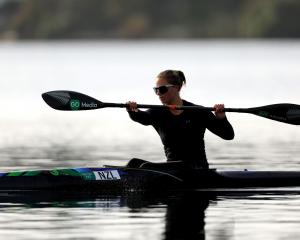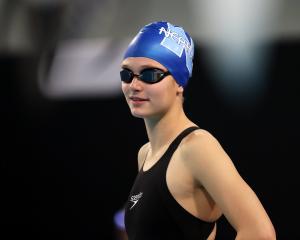Dunedin sports scientist David Pease played a significant role in testing the new togs launched by international swimwear manufacturer Speedo for the Beijing Olympics.
Pease (40), a lecturer in biomechanics at the University of Otago School of Physical Education for the past 14 years, attended official launches at Tokyo and Manilla this week.
It is second time around for Pease who was also involved in the development of Speedo's previous design, launched in time for the 2004 Athens Olympics.
‘‘It's been a lot of fun to be involved in a long-term project and see it come to fruition,'' Pease told the Otago Daily Times from Tokyo yesterday.
Pease was an active collegiate swimmer in the United States before accepting a position in Dunedin 14 years ago. He said testing for this latest development had been even more rigorous than it was in 2004.
Pease has been used to test the garment because he has access to the University of Otago's swimming flume. It has been in operation for the past 10 years and is the only one in the southern hemisphere.
There are only six flumes in the world. Japan has two, China one and there are known to be two in Europe.
Many hours of testing and painstaking observation using the flume have gone into the latest Olympic offering by Speedo.
The new brand was launched simultaneously in New York, London, Sydney and Tokyo after extensive in-water development and testing was watched over by Pease.
Pease, a specialist in biomechanics, is one of only a privileged handful of people from outside the company who have been involved in the hush-hush development, timed to be ready for this year's Beijing Olympics.
So vital was his involvement he was invited to be the expert on a media panel at the Tokyo launch of the new design. ‘‘We have done hundreds of tests to see how well the suit behaves in the water,'' Pease said.
The swimmer is held in place while holding on to a special test rig so close-up camera shots can be taken to show the movement of water past the suit. It enables researchers to detect points of drag.
‘‘The flume allows you to get a far better shot because it keeps the swimmer still in relation to the camera,'' Pease said,
‘‘The flume allows us to measure drag far more accurately because we can control water velocity accurately.''
In the flume it is possible to detect differences between suits down to as little as 100g and that is important when an Olympic level swimmer creates between 11kg and 12kg of drag in the water at world record pace.
‘‘It's the equivalent of sticking your hand out of a car window at about 145kmh - that's the amount of drag you are fighting against at world record swimming speeds,'' Pease said.
Computational fluid dynamics, a form of computer modelling, has also come to play a bigger part in swimsuit development.
Researchers use what they have learnt from the flume, combine that with the computer analysis and then come up with design changes they can test on the computer model and then trial in the flume.
Pease said the new design has a number of innovations to reduce drag, such as the use of fabric welds to hold seams together, rather than stitching.
‘‘The whole structure of the suit is different. It is made of new material and all the seams are welded together and lies very close to the body,'' Pease said. ‘‘Even the zip has been redesigned and lies flat.
‘‘There is also some structure built into the suit to help hold the core and control body shape.''
Pease would not speculate on how much faster swimmers would travel in the waster,
‘‘It depends on an athlete's brain and temperament.''










